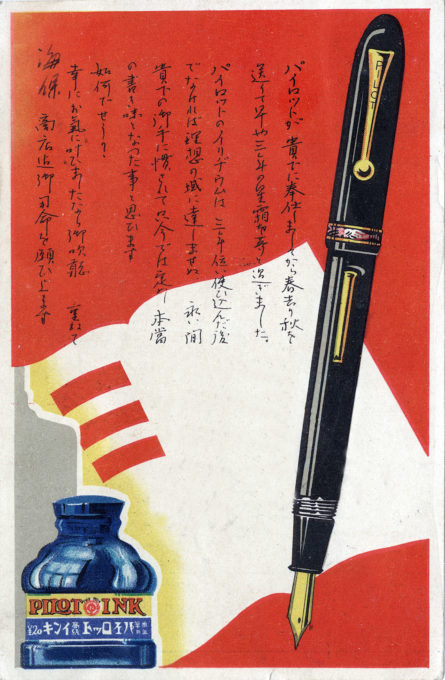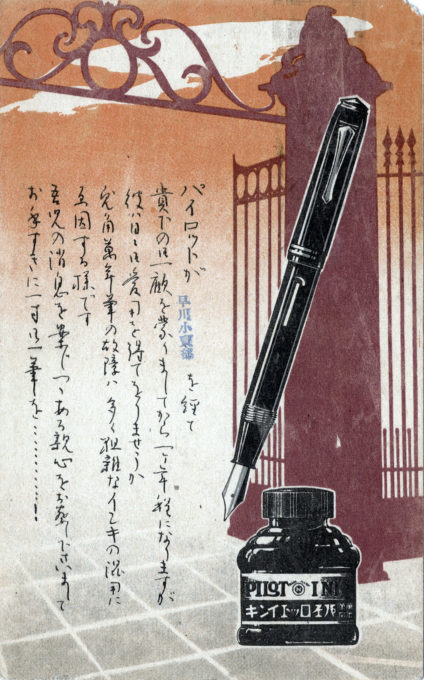See also:
Tokyo Nautical School, Etchujima, Tokyo, c. 1910.
“Writing lesson”, c. 1910.
Pilot’s founders, Namiki Ryosuke and Wada Masao, were both graduates of the Tokyo Nautical School (which would later become the Tokyo University of Marine Science of Technology). They first met when Wada served as a cadet on board the Ariake Maru, a merchant ship on which Namiki was the chief engineer.
The shared experience of life at sea for six months established a strong rapport between the two, forming a firm friendship from that time forward. Together, they spoke enthusiastically about their shared dream of someday creating something manufactured entirely of Japanese materials that the world would be proud to use.
In 1906 Namiki was invited back to teach at his alma mater. While back at the Nautical School, aside from his professorial duties, Namiki maintained a keen interest conducting research into the wear and tear of ruling pens used for maritime navigational cartography and analyzing, as a material alternative, the manufacturing of a gold alloy-based pen nib for practical use.
In 1909, Namiki applied for and, in 1910, obtained patents in the U.S. and Great Britain for his Namiki Ruling Pen, designed to regulate the flow of ink to the pen blade. By 1916, Namiki had also succeeded in machining a gold alloy pen point, the most complex aspect of making a fountain pen nib, from natural iridosmine ore mined in Hokkaido. Soon thereafter, he resigned from his professorship to concentrate on the manufacturing and sales of his new product.
Namiki Manufacturing Co., Ltd., the predecessor of today’s Pilot Corporation, was founded by Namiki and Wada in January, 1918, bolstered by Wada’s sizeable capital investment. The company’s original trademarks were a ‘lifebuoy’ logo and the ‘Pilot’ brand name.
The rationale behind the ‘Pilot’ name for the new pen was of nautical origin, deriving from Namiki’s thinking ‘when a convoy of ships is proceeding in line astern at sea, the veteran ship’s captain who sails in the ship at the head of the convoy and guides the fleet is called the ‘pilot’. Our brand name ‘Pilot’ … leads the field.’
Namiki Co. in 1926 developed Laccanaite lacquer, applied to inhibit the deterioration of the fountain pen’s core materials, and making possible the manufacturing of the distinctly Japanese maki-e fountain pen.
In 1927, Namiki began opening sales offices in Shanghai, Singapore, New York, and London, exporting the taka-maki-e fountain pen into the European, American and Asian markets.
The company also entered into a strategic distributorship with Alfred Dunhill, Ltd. of London for European sales, giving rise to the development of the Dunhill-Namiki fountain pen.
In 1938, Namiki Manufacturing Co., Ltd. formally changed its name to The Pilot Pen Co., Ltd.




Pingback: Nippon Pencil Manufacturing Co., Tokyo, c. 1930. | Old Tokyo